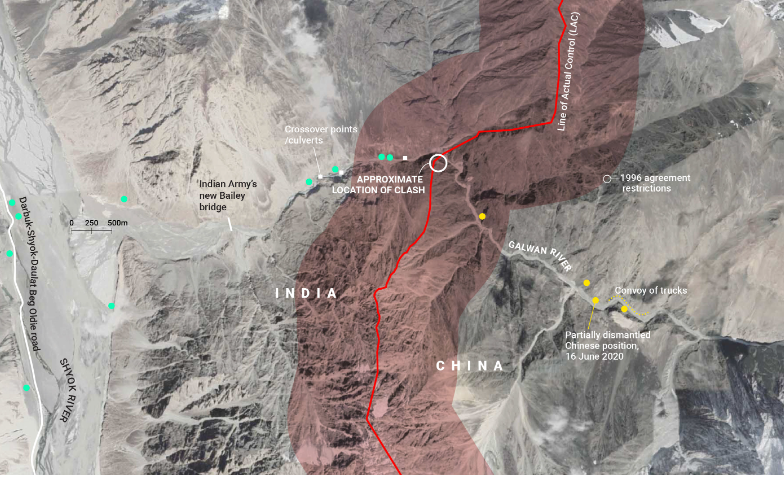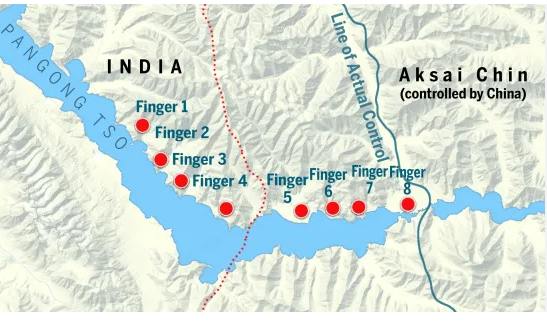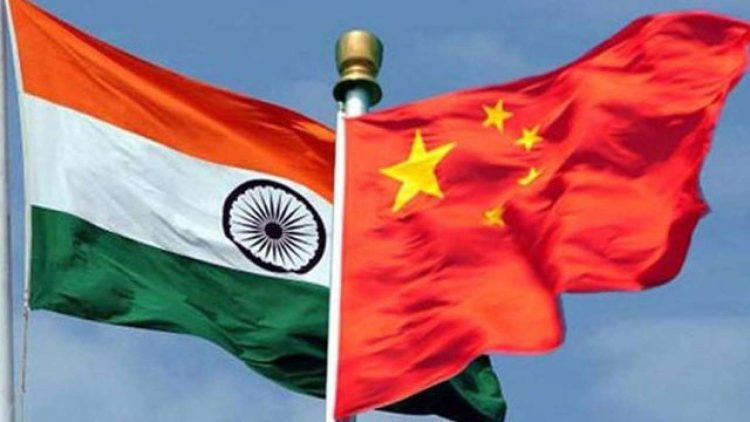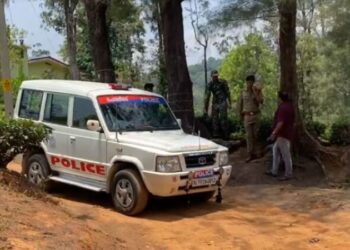New Delhi: India and China have initiated a number of infrastructure projects since their standoff. Both countries are continuing with their construction activities while they are still expecting the 19th round of Corps Commander level negotiations to resolve their issue in the Galwan region.

Three years after the two nations engaged in a brutal conflict in Galwan, there is frantic activity from both sides near Pangong Tso, a lake crossing eastern Ladakh and western Tibet. India is busy constructing a black-topped road on its side on the north bank while China is rapidly building a bridge across the Pangong Tso, connecting the north and south banks.
According to reports, currently under construction on the Chinese side is the main bridge, while the minor bridge has already been finished. According to intelligence reports, in addition to the bridge, work is also being done to connect the south bank with Shandong Village. East of the Khurnak fort is a Chinese air defense deployment. Along the G-0177 expressway in Yuli, a 22 km-long tunnel is also being built as a connection to the crucial G-216 motorway in Tibet.

According to reports, the budgetary allocation for the Border Roads Organisation (BRO) has substantially expanded in recent years. The capital budget for BRO in 2023–2024 was 5,000 crore, a 43% increase above the 3,500 crore allotted in 2022–2023. A large portion of money was used to fund the India-China Border Roads (ICBR) project. Over 1,400 km of strategic roads will be built in the first and second phases of the ICBR along the 3,488 kilometer LAC. It has been heard that a third phase is also under progress and will mainly focus on Arunachal Pradesh. The eastern sector of the BRO’s efforts to improve all-weather connectivity along the LAC are almost complete.
India holds one-third of the 135 km-long boomerang-shaped Pangong lake. ‘Fingers’ refers to mountain juttings of the Chang Chenmo range that extend into the glacial lake. India has consistently claimed ownership of the lake up till Finger 4, but its claims extend all the way to Finger 8, which is where India believes the Line of Actual Control (LAC) to be located.

Early May 2020 saw the first conflicts, and tensions erupted in the Kailash ranges in July and August 2020 due to the north bank’s significantly greater perception differences compared to the south bank. The Indian Army has a permanent position near Finger 3, while the Chinese have a base east of Finger 8.
The Corps Commander-level talks between India and China remain bottlenecked over two remaining friction points at Depsang and Demchok. The source claimed that at both locations, the Chinese side had been impeding Indian patrols.













Comments